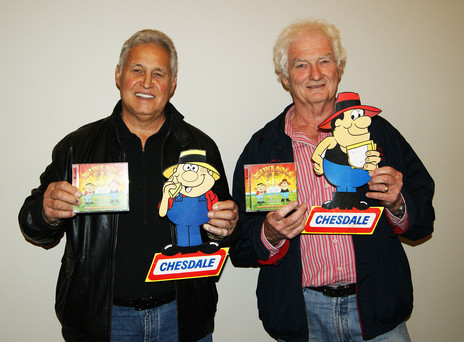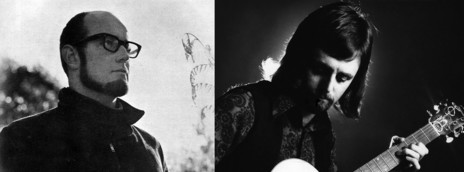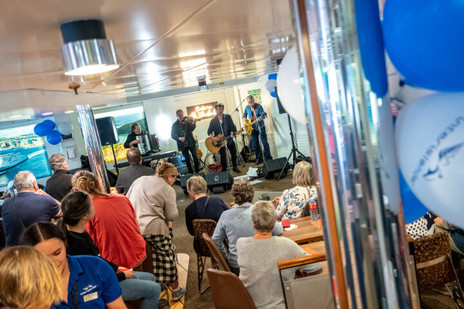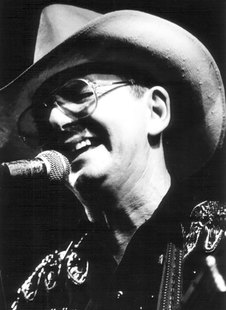
The Interislander Arahura in the Marlborough Sounds, South Island.
What’s the difference between a pop song and a jingle? The most obvious answer might be that a jingle is a piece of music designed to sell a product, while a pop song is a product.
Of course, there are plenty of popular songs that have been repurposed as jingles; in fact, this has increasingly become the norm. As composer Jim Hall has observed: “Whereas twenty years ago music licensing was a slippery slope that labels and publishers were wary of, now it has become one of their few sources of income, and bespoke composition is becoming as rare as the black robin in New Zealand.”
But there have also been jingles that have gone on to become popular songs in their own right – or true folk songs with lives of their own – often long after the product in question has left the marketplace.
When it comes to the process of making a jingle, there’s little practical difference from the making of a pop song. The voices and musicians you hear on a jingle may even be the same ones you have heard on your favourite records. And the stories of how they came about can be as random and ridiculous, or as contrived. Here is a handful of “bespoke compositions” that have outlasted their original purpose.
--
Griffin’s Gingernuts
“Griffin’s gingernuts are so spicy
Made from old English recipe
There’s no ginger nuts taste quite the same
Ask for Griffin’s gingernuts by name!”
In the first few years of New Zealand television, Dormer Beck produced more television commercials than any other agency in the country. As keepers of the Griffin’s account, they were responsible for this 1960s classic. The 15-second jingle has the feel of a calypso, hugely popular at the time thanks to American singer Harry Belafonte. It is sung in an exaggerated Caribbean accent while a frantic bongo part adds to the faux exotica. The commercial continued screening into the 70s and was remade in the 80s, this time in colour, with the song expanded to 30 seconds and filled out with synthesisers and fake steel drums.

Obituary for George Boyle in the NZ Herald, 1999
Where had this crudely parodic if highly successful earworm come from? The answer was revealed to surprised staff at the NZ Herald in 1981 at a farewell for Scottish-born longtime subeditor George Boyle. As staff writer John Roughan noted in a 1999 tribute: “Most of us had no idea that the dapper gentleman of few words, who trimmed our copy for wider consumption, had many more strings to his bow. No idea until he stepped forward to make his farewell speech and pulled out a ukulele.”
Muttering that he had “written a few things over the years” Boyle proceeded to sing the famous Gingernuts commercial, followed by several others that, for many of those present, would be equally familiar, including the lyrics to the long-running Geddes Dental jingle (“Broke my dentures, broke my dentures …”, to the melody of ‘Oh, My Darling Clementine’). Plus, that indelible refrain “It must be Wattie’s ...”.
Chesdale Cheese
“We are the blokes from down on the farm
We really know our cheese.
There’s much better value in Chesdale
It never fails to please …”
First heard on television in 1965 and seemingly etched forever into the nation’s psyche, the iconic local jingle draws on the archetype of the New Zealand farmer as the provider of both primary produce and wholesome down-to-earth wisdom.
Its origins could hardly have been more urban, not to mention drug-inspired.
In the original black-and-white cartoon, it is sung by a couple of cheerful, gumboot and black singlet-wearing characters from the rural sector: a dairy farmer and a cheese factory worker, identified as Ches and Dale.

Ches 'n' Dale, aka Gordan Hubbard (left) and Brian Borland. The duo was at Universal NZ just before they were to embark on a fun day of radio and TV interviews to promote the Kiwiana Goes Pop double CD. - Grant Gillanders Collection
Off screen, Ches and Dale were Brian Borland and Gordon Hubbard of Auckland folk-pop trio the Yeomen. Borland and Hubbard harmonised and played banjo and guitar respectively, with Peter Carter bolstering the chords on tenor guitar.
The music was composed by Terry Gray, at the time churning out jingles for the Dormer Beck agency, which had been commissioned to create the ad by Butland Industries, local pioneers in processed cheese. Gray would later tell the NZ Folksong website that he doesn’t remember thinking of the Chesdale song as anything special, as he was working on so many commercials at the time. It was recorded by Bruce Barton in his Eden Terrace studio.
The concept and lyric came from Robert Jenkins and Don Couldrey. Both had recently returned from overseas, Jenkins having spent three years working as a copywriter in London, Couldrey in the American Hanna-Barbera animation studio. In 2019, Jenkins revealed to the NZ Herald’s Bernard Orsman that the pair had come up with the whole thing after smoking cannabis.
They had been handed the assignment in Dormer Beck’s Ponsonby office by the agency creative director Bruce Ginders. As Jenkins told Orsman: “Seeking inspiration, we popped across the road to Don’s ‘Jellybean’ Austin A30 and whilst contemplating the nice view of Auckland Harbour, lit up some half-decent weed. Back in the office, suitably inspired and tongues firmly planted in cheeks, we came up with the idea of creating two cartoon characters called Chester and Dale while Don used his well-honed cartooning skills to create two suitably garbed Kiwi dairy farmers. I then set about coming up with the appropriate doggerel for a jingle to help position processed Chesdale Cheese against less expensive block cheddar.”
Ginders hated it and told the pair he wouldn’t present their idea to the client, but Jenkins and Couldrey, “pumped up with de-mob bravado”, decided to present it anyway. Butlands founder Jack Butland, who would later receive a knighthood, “listened patiently, not cracking a smile or a frown and then said after a brief pause, ‘That’s one of the best advertising ideas I have ever seen’.”
Watch the 1965 original and, in colour, the 1975 version.
Below, Arthur Baysting describes the long shelf life of the Chesdale Cheese jingle:
Different faces, many races
In 1970, nightly ad breaks on the country’s only television network began to feature a 50-second ad for Gregg’s instant coffee that would remain in rotation for much of the decade. The ad featured no spoken words, just a fresh and memorable song that opened with the lines: “Different faces, many races, living in the sun / good times to remember where all may live as one.”

Songwriter Dave Jordan and singer Alan Galbraith
Delivered with soulful conviction by former Sounds Unlimited frontman Alan Galbraith, the pop ballad-in-miniature plays over a fast-cut visual collage. A pipe-smoking, coffee-sipping observer stands on a city balcony as a cross-section of New Zealanders go about their daily routines, “living in a place where each is free to go his way …” There are elderly couples, signwriters, students, hippie protesters, children, plus a couple of gratuitous rear-view shots of a woman in a mini skirt, cropped to show her only from below the waist. Among the predominantly Pākehā faces are several Asian and Māori ones. It is believed to be the first non-animated television commercial in which Māori appear.
And who is the man on the balcony? A 30-something Pākehā dressed in tie and stylish leather jacket and sporting fashionable sideburns, his identity is revealed in the final shot where we see him return indoors, pour himself another mugful of the client’s brew, sit down, and begin to bang busily on a portable typewriter. He’s the ad-man, of course, inspired by this vision of diversity and harmony and now sketching out his idea for the commercial, or perhaps the jingle itself.
In reality, the jingle was composed (in collaboration with John Dawson) by Wellington songsmith Dave Jordan, who had won the APRA Silver Scroll the two previous years with songs of romantic disappointment; The Avengers recorded his winning song ‘Out of Sight, Out of Mind’. Jordan would later move to England where he continued to pursue songwriting as a profession. One of his songs, ‘You Don’t Know Me At All’ was recorded and released as a single in 1976 by Ringo Starr.
This was one of several versions of the ad, all cut to the same track, released over a period of several years. A “summer version” was a similar composite of citizens, shot at Wellington’s Oriental Bay; another was shot at an A&P show,; and others concentrated on specific trades such as nurses or construction workers.
Though the ad had disappeared from screens by the end of the 70s, in 1997 ‘Different Faces’ made a television comeback, still serving the same old brew though this time with programmed drums and power chords.
Watch the original 1970 version at Ngā Taonga Sound & Vision, plus the Summer 1970 version.
Cruisin’ on the Interislander
In most commercials the product is the star, while the singer remains unseen. A notable exception was the Interislander ferry campaign of the early 1990s, which not only revolved around a song that was instantly recognisable as The Warratahs, but also featured the Wellington country troubadours front and centre in the widely screened television and cinema advertisement.
The Warratahs had previously turned down a couple of commercial offers. Being so visibly identified with an advertising campaign can compromise a band’s credibility. They had built their following the old-fashioned, grassroots way, through relentless touring, winning fans in the smaller towns that didn’t often see visits from big city bands.
It was a chance meeting in Oriental Bay between Warratahs frontman Barry Saunders and former Tamburlaine and The 1860 Band member Rob Winch that would change all that. Winch, who had become a successful session musician and jingle writer, asked Saunders to sing on a demo for a song he had written for a campaign to convince New Zealand travellers that the Interislander was an experience worth sharing. As Saunders told NZ Musician: “Next thing we are sitting at a table with a bunch of people and a big bowl of fruit on it talking about filming on the big white boat. It all felt pretty good as this is what we did anyway, and now we were getting paid for it!”

The Warratahs performing on an Interislander ferry over 30 years after the original TV commercial was broadcast.
The commercial had the feel of a travelogue, showing Barry and his bandmates on the road, on stage and on-board ship, enjoying a laugh and seeing the sights, and instantly turned the Warratahs into household figures. As Saunders says: “When it went to air it was like a missile that lobbed right into middle New Zealand! You couldn’t window shop.”
The song, though not written by the group, bears their distinctive musical signature, with accordion, mandolin, Nik Brown’s sawing fiddle, and Saunders’ unmistakable voice singing of places and journeys with characteristic sincerity. More than 30 years later they still get requests to play it live. They are still touring, still travelling on the Interislander.
The Great Crunchie Train Robbery
You won’t get far making a list of New Zealand’s best-known jingles before you encounter the name Murray Grindlay. Elsewhere on AudioCulture you can read in detail about his early career fronting The Underdogs (that’s him singing – in between outbursts of hilarity – on ‘Sitting in the Rain’), as a country-style singer-songwriter, and as his mysterious alter ego Monte Video. But by the mid-70s he had found his métier as a jingle king. Of the hundreds of jingles he has written, produced, and performed, this one from 1975 may be the best remembered, in part because it remained on screens for over 20 years. This micro-western – which appeared as both a standard-length television ad and a one-and-a-half-minute cinema version – was directed by Tony Williams and featured a stellar cast of New Zealand screen actors, including BLERTA members Bruno Lawrence and Ian Watkin. The drama unfolds against a banjo-driven ballad, which took Grindlay as long to write as it took him to sing it. In an interview for NZ On Screen he recalled that Colenso’s Roger McDonnell had flown him down to Wellington to discuss the brief for the ad. “I walked into his office with my guitar. He had all the lyrics written. Everything. Which was quite unusual in those days because I used to often write the lyrics, but Roger had written them all. And I took out my guitar and it was just one of those times and I just started playing it.”
Cadbury’s Pinky, kind of kinky
If Crunchie was bluegrass then Pinky was glam rock. The year after the Crunchie ad, Murray Grindlay concocted this outrageous pastiche to promote another of Cadbury’s confectionaries. Picking up on the fashionable androgyny of Ziggy-era Bowie and following hard on the high heels of local glam star Alastair Riddell, he came up with this piano-based stomper. The lyrics are full of double-entendres (“Pinky, people say your kinda kinky / take off your red satin wrapper …”) Once again, Tony Williams directed the video, shot in a strobe-lit nightclub; various members of Dragon can be seen, though only Marc Hunter is prominently featured, sharing the vocal spotlight with an Afro-coiffed Eliza Keil. Meanwhile actor Michael Wilson, in blue eyeshadow and pink satin pants, does various suggestive things with the confection in question.
Watch Kind of Kinky at Ngā Taonga Sound & Vision
Go for G-g-g-g-g-g-g-g-Gerard!
It says a lot about John Rowles’s industrial-strength charisma that he can both sing and star in this plainly silly 1980s television commercial and emerge with his dignity and cool pretty much intact. “Is this New Zealand’s most perfect celebrity endorsement?” asked Tara Ward in The Spinoff. “This has it all: a celebrity with a mullet, an unexpected key change, and a cute kid going nuts for her new Mediterranean-look roof. I can’t stop watching.” “John, that’s a great roof!” exclaims the advertisement’s happy homeowner – or does she say, “that’s a great riff?” Whatever, the jingle’s stuttering hook “G-g-g-g-g-g-g-g-Gerard” is both immensely irritating and instantly unforgettable.
There’s A Blue Sky Waiting For Me

Al Hunter at The Gluepot, October 1992 - Photo by Alan Fon
Jim Hall knows how to find those chords and voicings that can stir the national spirit. With Boh Runga he wrote ‘I’ll Meet You There’, the “official New Zealand millennium song” which rang anthemically from televisions in the last months of the 20th century. That same year it was his arrangement of ‘Pokarekare Ana’, with Rose Hanify’s solo voice shimmering against the massed chorus of the New Zealand Operatic Society Male Choir, that Air New Zealand used to promote travel to the Rugby World Cup. But he has also created personal pieces that feel as though they would have existed regardless of the occasion.
A case in point is the lovely ‘There’s A Blue Sky Waiting For Me’, co-written with Callie Blood and Ian Morris, Hall’s then-partners in the Soundtrax production company. Commissioned for an AMP Insurance ad, the song makes no mention of the product but rather has the feel of some lost page from the Great American Songbook. Al Hunter evokes, without crassly imitating, the mood and style of Willie Nelson’s Stardust, while the late Rob Winch provides the deft guitar obbligato. The strings are courtesy of a Fairlight CMI, an early, elaborate and expensive sampler, of which Soundtrax had one of the first and few in the country. Not surprisingly, Hunter was frequently asked to perform the song live, and included it on his 1992 album The Singer.
Dancing the Columbine
Larry Killip is another musician with roots in the 60s beat revolution. From early Auckland pop bands the Zarks and Omnibus, the singer, songwriter and guitarist moved through 70s country-rock with his own band Killip and 80s power-pop with Larry and the Ladders. He then settled into studio work, writing and producing literally hundreds of jingles in a wide array of styles. He’s a master of the short unforgettable sting (“Briscoes you’ll never buy better” is one of his) but can also stretch out, as he does in his 1993 ad for Columbine Hosiery, with its slinky Latin beat. As Grant Gillanders opined in the liner notes to And Now A Word From Our Sponsor, a 2019 CD compilation covering 70 years of “classic Kiwi ads”, the song “could just as easily have been a hit if it had been a pop record.” If the voice sounds familiar, that’s Fiona McDonald, moonlighting between sessions with Headless Chickens and Strawpeople.
Travelin’ On
Murray Grindlay emerged from behind the studio doors and onto the screen for the elaborate 1988 road movie in miniature, advertising Europa petrol. The song, written by Grindlay, harked back to his roots with 60s blues rockers The Underdogs, and he sang it with Midge Marsden, the country’s much-loved blues singer and harmonica wizard. The song and its accompanying cinema and television commercial also featured a celebrated international guest, Texas guitar hero Stevie Ray Vaughan. This musical trio, plus local actress Brigitte Berger and Vaughan’s New Zealand-born fiancée Janna Lapidus, are seen getting up to assorted hijinks in trucks, tanks, aircraft and what looks more like a Texas juke joint than a typical New Zealand pub. Five years later – and three years after Stevie Ray’s untimely death – Midge and Murray regrouped for an encore. By this time Europa was no more, and ‘Travelin’ On’ had taken on a life of its own as the closing number in Midge’s live shows. It became the title track of his 1993 album, with Murray joining him in the accompanying video, and was revisited yet again in an “unplugged” version on Midge’s 2007 album Travel ‘N Time.
Harbour Fish
‘Forever Tuesday Morning’, ‘One Black Friday’, ‘Woke Up Today’, ‘Alvison Park’’… With his old Rongotai College classmate Andrew Fagan, Gareth Curtis wrote hit after hit for The Mockers, even after he had stopped touring as bass player for the local 80s pop sensations. Always happier in the studio than on the stage, the innately melodic popsmith eventually turned his talents to jingle writing. Over the past few decades, he’s been responsible for hundreds of radio commercials: instant singalongs, no more than 30 seconds in length, designed to lure you in the sweetest way to Steve’s Tyre Service (“for a better grip on life”), Baby City, or the Glenfield Mall. But he can still pen a standard-length song too, with verses, choruses, the works. And when South Island seafood company Harbour Fish needed a theme tune, he came up with this full-blown sea shanty.
“Haul in the catch
Bring in the fish!
We are the crew
of Harbour Fish!”
The Harbour Fish Theme won best jingle in the 2016 New Zealand Radio Awards.
Turn The Page
Callie Blood had already spent a decade singing with numerous Wellington bands, including all-women group the Wide Mouthed Frogs, when in 1985 she joined former Dudes guitarist / record producer Ian Morris, Steve Robinson of Tamburlaine, and session musician Jim Hall in the production company Soundtrax. During the 80s she not only wrote and sang on numerous Soundtrax jingles, but also on a No.1 hit, ‘The Game Of Love’, released under Morris’s nom-du-disque Tex Pistol. In the 1990s, Callie and Ian both relocated to Auckland where they continued to work together as Morris and Blood. Among their many commissions was this sophisticated homage to Burt Bacharach, the sonic centrepiece of an elaborate campaign for the Glassons clothing store chain.

Callie Blood and Ian Morris, Auckland, late 1990s.
Callie remembers: “I wrote the lyrics, and Ian and I wrote the melody together sitting our little studio in Herne Bay. We would just sit with him playing the guitar and throw in an idea, reject it or keep it and move on. It was a great process, and somehow we would never take offence at the other’s rejection – it was always accepted that we would go with the best idea. And of course, with the template being understood that it would sound ‘Bacharachian’ it had to be in that genre. From memory, I wrote most of the lyrics when we already had the main verse/chorus structure, trying to keep within the ‘book’ theme but still sound like an authentic song, rather than a jingle.”
While Callie fine-tuned the lyric, Ian brought his intense attention to detail to arranging and recording a demo version to play to the client, the aim being that “if it was given the big tick, we would go into a studio and record the strings with the Auckland Philharmonia.
“He was always trainspottingly accurate with capturing the sound and the mood of a moment in time, whether it was studying Nelson Riddle string arrangements or examining George Martin’s reasons for turning something inside out … he had a fascination with the fine print on every project we ever did.”
The track did indeed get the big tick, and was produced in 30, 60 and 90-second versions which would be heard in stores, cinemas and on television.
Callie says: “From memory, the backing track was all programmed and recorded at our studio, with just the strings recorded at Airforce. There was a lot of time spent getting the atmosphere – the reverb, the guitar sound, the little percussive signatures that all made it sound like it was out of the Burt songbook. Oh, and I sang it ...”
--
Read more: Top 10 New Zealand TV ads, by Irene Gardiner